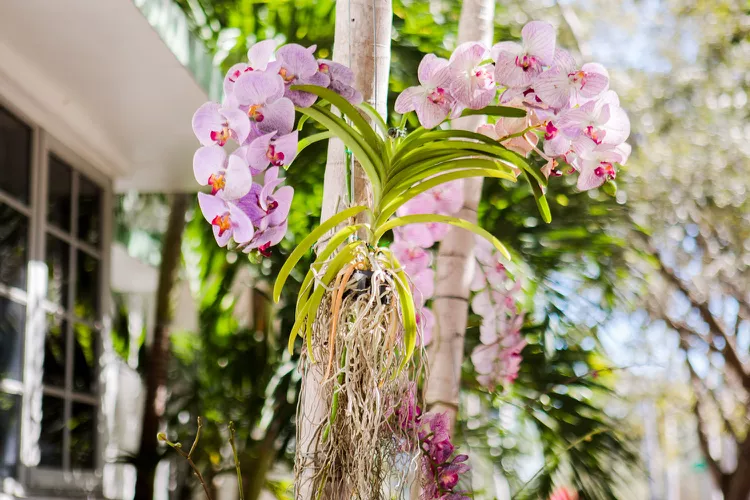
The optimal time to repot an orchid is after it has finished blooming. Orchids are common houseplants that can normally be started at any time for indoor development. Beginners may take care of orchids quite easily as long as they are aware of the optimum environments and upkeep requirements for the plant.
Despite the wide variety of orchid species available, they all share a few morphological traits. Because of their tall, gently curved stems (also known as flower spikes), which are covered in blossoms in either solid colors or speckles, orchids are simple to identify. Usually, its sepals (innermost petals) and petals come in sets of three. An orchid’s petals may have ruffled or notched edges, depending on the varietal. To stop water loss, waxy coatings are used on orchid leaves. Although certain orchid species develop more quickly than others do, on the whole, their growth rate is somewhat modest.
Care

Light
For orchids to blossom, strong light is necessary. However, they can get burned in the sun. Choose direct, bright lighting from a south or east-facing window, for example.
Soil
In normal potting soil or potting mix, orchids cannot grow. Instead, you might buy or construct your own light, quickly draining orchid growing media. Bark, sphagnum moss, perlite, and peat are common ingredients in mixes. The optimal pH is somewhat acidic.
Water
In order to prevent rot, orchids need to dry out between watering. If the growing material seems dry to the touch and the pot feels light, it may be time to water. Or you can examine the roots directly. They have plenty of water if they are chubby, white, or green. They require water if they appear withered and gray. Additionally, if they are spongy, black, or brown, yet shriveled, they may be decomposing.
During the summer, when the plant is actively developing, you will normally need to water twice weekly; during the winter, you will only need to water once per week. Water should be used at room temperature, and it should be poured out of the saucepan slowly.
Temperature and Humidity
Depending on its classification, orchids thrive in temperatures between 50 and 90 degrees Fahrenheit. Additionally, they favour humidity levels between 40 and 70 percent.
If you create a warm, relatively damp environment for your orchid, you can prolong its blooming period. Don’t put your orchid in an area where it will be exposed to heating vents, direct sunshine, or cold draughts. These delicate blossoms are susceptible to the effects of dry air, direct heat, and cold.
Fertilizer
Use an orchid-specific fertilizer as directed on the label during the growing season. Winter is not the time to fertilize.
Types of Orchids
There are around 100,000 recorded hybrid orchid species and about 30,000 types of wild orchids. For proper care, you must be aware of the type of orchid you have. The two types of orchids that are most frequently offered for purchase are:
Phalaenopsis (moth orchids): The round, lip-shaped flowers of these orchids are produced on a single, long stalk that emerges from a whorl of fleshy, oval leaves. Typically, flowers are white, purple, pink, or a combination of these colors.
Dendrobium (cane orchids): These orchids frequently have multiple flower clusters per plant, and their tiny flowers develop in rows on stalks that emerge from thick canes. Typically, flowers are white or purple. Dendrobium leaves are small and protrude from the cane’s sides.
Table





